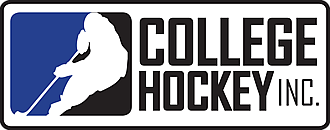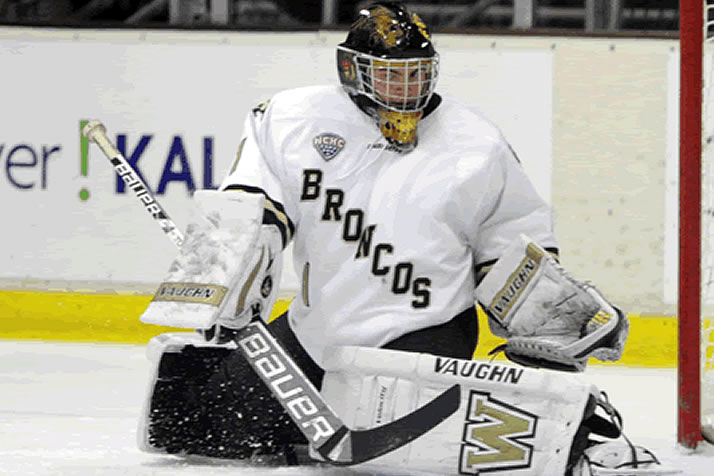


Hockey Now, a Canadian publication covering amateur hockey at all levels in in Alberta, British Columbia and Ontario, highlights goalies in its Nov. 23 issue, putting a spotlight on the long tradition of successful NHL netminders to come from the NCAA ranks.
In a feature story and sidebars on Western Michigan's Frank Slubowski, Denver's Sam Brittain and Canisius's Tony Capobianco, writer Mike Eidelbes looks at how practice, video work and competitive games help develop goaltenders. From the days of Esposito and Dryden to Elliott and Scrivens, college hockey has a long history of producing NHL-caliber goaltenders.
Hockey Now: AB Edition (Brittain) | BC Edition (Slubowski) | ON Edition (Capobianco)
"What is it about the college game that allows Canadian goaltenders to develop over the course of their college hockey careers and thrive when they reach the game’s highest level?" Eidelbes writes.
NCAA teams play fewer games than those in Canadian major junior ranks and similar developmental leagues. Some feel the limited schedule hinders development, but others feel it actually benefits goaltenders.
“The college players who become elite goaltenders buy into the notion they can improve with a lot of practice and it allows their game to mature,” said Rensselaer head coach and former NCAA Ferris State goaltender Seth Appert.
Like a starting pitcher in baseball, college goalies use the down time between games to their advantage.
“Obviously, it’s less games, but you get to practice a lot more,” said Denver goalie Sam Brittain, a senior from Calgary and a 2010 Florida Panthers draft pick. “One of the benefits of college hockey is finishing the weekend, going back in on Monday, breaking down tape, using resources like assistant coaches, and going out to practice to work on your weaknesses and evaluating what works and what doesn’t.”
“Watching video, breaking down shots against and chances against … you can watch for an hour easily,” said Canisius goalie Tony Capobianco, who hails from Mississauga, Ontario. “You’ve got a goalie coach to work with. Regular practice is not enough. You’ve got to get your goalie work in. Thirty minutes of work once or twice a week and you’re good.”
It's not just the time during the season that pays benefits, Eidelbes writes. It's also the number of seasons that NCAA goaltenders are able to play before they have to take the next step.
Time plays another crucial factor in a college goaltender’s growth. While players from some developmental leagues are pushed on to professional careers as 20- or 21-year-olds, it’s not unusual to see collegians as old as 23 or 24. The freedom to turn pro early if the player is ready is there – [Ed] Belfour and [Curtis] Joseph both left after one season of NCAA hockey – but colleges provide a place for players to mature and develop at their own pace. To wit: Dwayne Roloson, who played in more than 650 NHL games over a 15year career, didn’t leave UMass Lowell until he was 24.
“The extra years you get in college hockey – weight training, learning how to deal with travel, learning practice habits, juggling hockey and school – are beneficial,” said Brittain, who turns 22 in May.
Hockey Now is available at hockeynow.ca and at rinks throughout Alberta, British Columbia and Ontario.